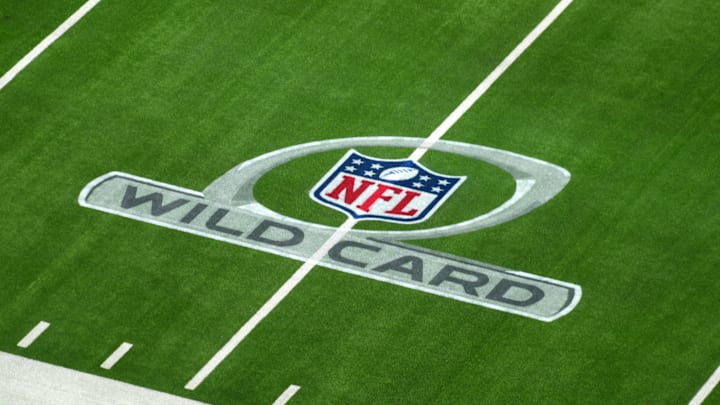NFL Playoff Format, Dates, History and Predictions

The NFL playoffs begin Jan. 11, 2025, which is the next step for teams looking to capture the ever-elusive Lombardi Trophy.
Seven teams from the AFC and seven teams from the NFC will clash until just two remain to meet in Super Bowl LIX in New Orleans.
How are those 14 teams selected and matched? Let’s break it down.
Understanding the NFL Playoff System
The NFL playoffs essentially operate as a single-elimination tournament. Teams in each conference are seeded No. 1 through No. 7. The top-seeded teams in each conference receive a first-round bye.
That bye is incredibly valuable for teams, which is why so many will continue to play their stars after clinching a playoff berth in hopes of becoming the No. 1 seed in the conference.
The final two teams in each conference play in the AFC and NFC championship games, with those two winners advancing to the Super Bowl.
Current NFL Playoff Format
The NFL’s playoff format has changed in recent years. From 1990–2019, 12 teams made the playoffs, six from each conference. Starting in 2020, the field expanded to 14 teams. Two additional wild card spots were added, with the NFL calling it “Super Wild Card Weekend.”
The division winner with the best record becomes the No. 1 seed in each conference. The three remaining division winners are seeded by wins as well. So the division winner with the second-best record is the No. 2 seed and so on.
The No. 5 seed goes to the non-division winner with the best record, the No. 6 seed goes to the non-division winner with the second-best record and the final spot goes to a non-division winner with the third-best record.
In the event that two or more teams are tied, then the NFL uses a number of tiebreakers. If two teams are tied atop the standings in the division, the NFL will use the following scenarios as tiebreakers.
Breaking Ties Within a Division:
- Head-to-head record
- Best win-loss percentage for divisional matchups
- Best win-loss percentage for games with shared opponent
- Best win-loss percentage for conference games
- Strength of wins
- Strength of schedules
- Best combined ranking among conference teams in both points scored and allowed
- Best combined ranking among all NFL teams in both points scored and allowed
- Best net points in games with shared opponent
- Best net points in all games played
- Best net touchdowns in all games played
- Coin toss
For wild card teams, the NFL will first use division tiebreakers if the two teams share a division. If they do not, the following are used:
- Head-to-head record
- Best win-loss-tied percentage in games played within conference
- Best win-loss-tied percentage in games with common opponent
- Strength of wins
- Strength of schedule
- Best combined ranking among conference teams in both points scored and allowed
- Best combined ranking among all NFL teams in both points scored and allowed
- Best net points in conference games
- Best net points in all games played
- Best net touchdowns in all games played
- Coin toss
Once all of the teams are selected and seeded, the bracket is created. The No. 1 seed receives a bye and then plays the lowest seed in the following round. The second-highest seed plays the second-lowest seed. The higher seeds get home field advantage.
This often means that the No. 1 seed has to wait to know who its opponent will be. For example, if the higher seeds in each game were to all win, the No. 1 seed would match up with the No. 4 seed.
But if there was a bit of chaos in the wild card, then things could get shaken up quickly. If the No. 2 beats the No. 7 and No. 4 beats No. 5, but No. 3 loses to No. 6, then the No. 1 seed would host the No. 6 seed.
This pseudo-reseeding is done to give the team that played the best in the regular season the “easiest” path to the Super Bowl. It is supposed to reward the hard work put in during the first 18 weeks.
NFL Playoff Structure:
- Wild Card: No. 2 seed vs. No. 7, No. 3 vs. No. 6, No. 4 vs. No. 5 in each conference.
- Divisional Round: Winners from the wild card face the top-seeded team and other advancing teams.
- Conference Championships: Two remaining teams in each conference compete for a spot in the Super Bowl.
- Super Bowl: The AFC and NFC champions face off in the NFL's biggest game.
NFL Playoff Key Dates for 2024 Season
- End of NFL regular season: Sunday, Jan. 5, 2025
- Super Wild Card Weekend: Saturday, Jan. 11–Monday, Jan. 13, 2025
- Divisional round: Saturday, Jan. 18–Monday, Jan. 19, 2025
- Conference championships: Sunday, Jan. 16, 2025
- Super Bowl LIX: Sunday, Feb. 9, 2025
More NFL on Sports Illustrated
feed
